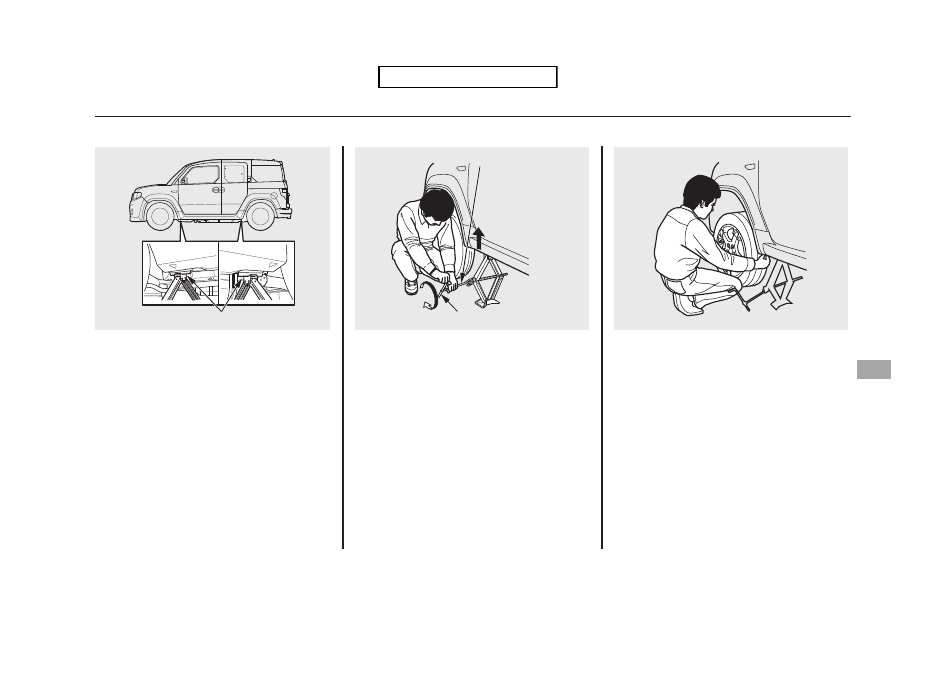Honda Element (2010 year). Instruction - part 19

9. Locate the jacking point nearest
the tire you need to change. It is
pointed to by an arrow molded into
the underside of the body. Place
the jack under the jacking point.
Turn the end bracket clockwise
until the top of the jack contacts
the jacking point. Make sure the
jacking point tab is resting in the
jack notch.
10. Use the extension and the wheel
nut wrench as shown to raise the
vehicle until the flat tire is off the
ground.
11. Remove the wheel nuts, then
remove the flat tire. Handle the
wheel nuts carefully; they may be
hot from driving. Place the flat tire
on the ground with the outside
surface facing up.
JACKING POINTS
EXTENSION
WHEEL NUT WRENCH
CONTINUED
Changing a Flat Tire
285
Taking
Care
of
the
Unexpected
Table of Contents